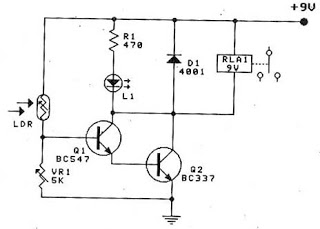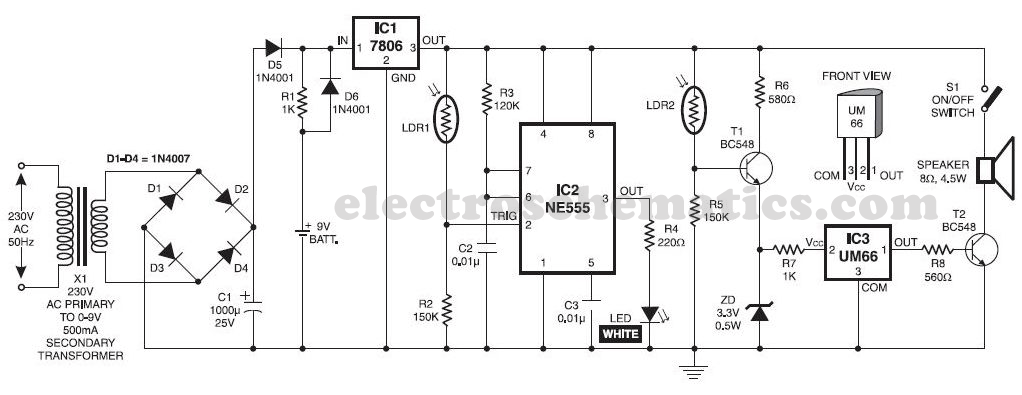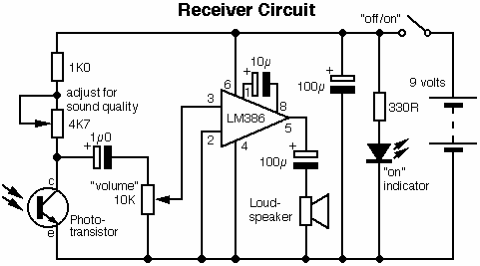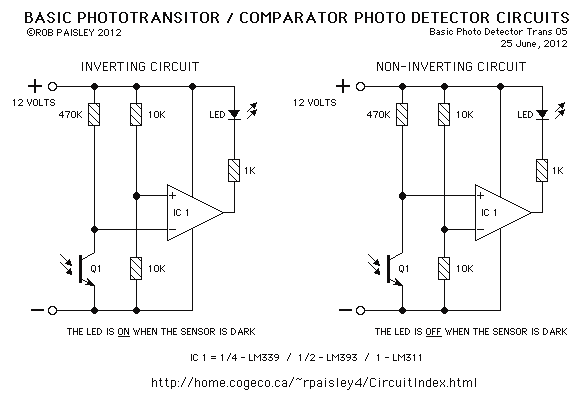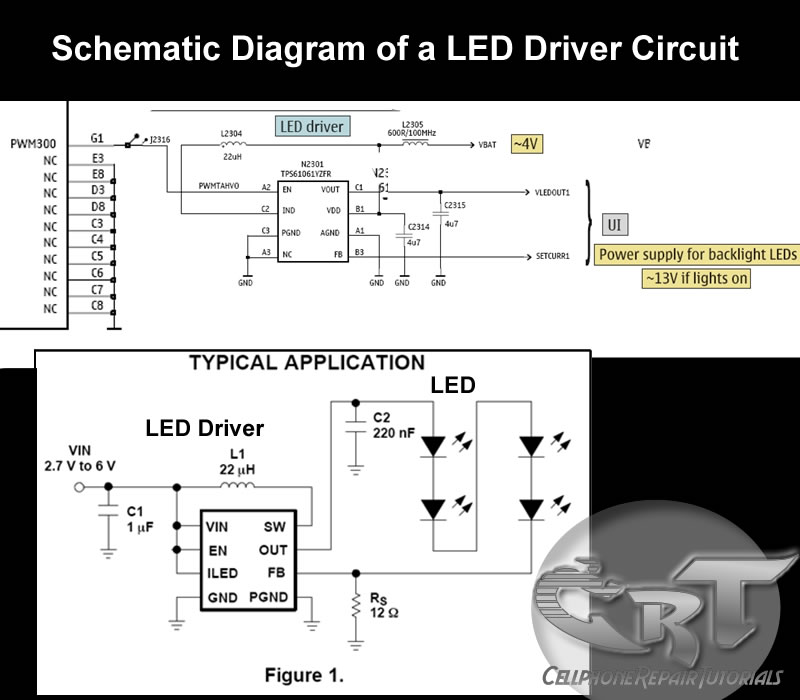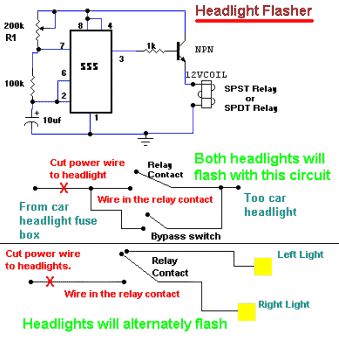
Light dimmer

This dimmer is designed to adjust the brightness of incandescent bulbs from zero to maximum. It achieves regulation from zero using a double delay circuit. The circuit is connected with two terminals, allowing for installation into a switch box without any modifications. The dimmer regulates the phase angle using a standard thyristor (SCR) such as the KT505 (or KT504, KT508, etc.). The maximum current is 1A, enabling connection to a load of up to 200W. Brightness can be dimmed to zero, eliminating the need for a separate switch. The capacitors used are rated for low voltage, making electrolytic types suitable. Caution is advised as the circuit is electrically connected to the mains, which carries a deadly voltage. Light bulbs should not be replaced under voltage, even when the dimmer is set to minimum. Prior to replacing the bulb or handling the circuit, it is essential to disconnect it from the mains. The potentiometer should have a plastic shaft.
This dimmer circuit operates by utilizing a thyristor to control the phase angle of the AC voltage supplied to the incandescent bulb. The double delay circuit is crucial for achieving a smooth transition in brightness levels, allowing for fine adjustments from completely off to fully on. The two-terminal connection design facilitates easy integration into existing switch boxes, thus simplifying installation without requiring extensive modifications to the electrical system.
The use of a thyristor such as the KT505 provides reliable performance, with a maximum current rating of 1A, which supports a load capacity of up to 200W. This makes it suitable for most standard incandescent bulbs used in residential lighting applications. The dimmer's ability to reduce brightness to zero enhances its functionality, allowing users to control lighting levels without the necessity of a separate switch, thereby contributing to energy savings and extended bulb life.
Capacitors in this circuit are required to handle low voltage, and the use of electrolytic capacitors is recommended due to their compact size and efficiency in filtering applications. However, caution must be exercised as the circuit is connected to mains voltage, which poses a significant safety risk. It is imperative that users adhere to safety protocols, including disconnecting the circuit from the mains supply before replacing bulbs or performing any maintenance.
The inclusion of a potentiometer with a plastic shaft is essential for user safety, as it minimizes the risk of electric shock during operation. Overall, this dimmer circuit design is effective for controlling incandescent lighting, providing both functionality and ease of use while emphasizing the importance of safety precautions in its operation.This dimmer is used to adjust the brightness of incadescent bulbs (dimming) from zero to maximum. Regulation from zero is achieved using double delay circuit. The circuit is two-terminal connected and so it can be installed into switch box without modifying the installation. To regulate the phase angle the dimmer uses ordinary thyristor (SCR) such as KT505 (or KT504, KT508, etc. ). The maximum current is 1A, so you can connect up to 200W load. Brightness can be dimmed to zero, so there is no need use the switch. Capacitors are just at the low voltage, so you can use electrolytic ones. Warning - the circuit is electrically connected to the mains - deadly voltage. The light bulb must not be replaced under voltage, even when the dimmer is set to minimum. Before replacing the bulb or handling the circuit you must disconnec it from mains. The potentiometer must have a plastic shaft. 🔗 External reference
This dimmer circuit operates by utilizing a thyristor to control the phase angle of the AC voltage supplied to the incandescent bulb. The double delay circuit is crucial for achieving a smooth transition in brightness levels, allowing for fine adjustments from completely off to fully on. The two-terminal connection design facilitates easy integration into existing switch boxes, thus simplifying installation without requiring extensive modifications to the electrical system.
The use of a thyristor such as the KT505 provides reliable performance, with a maximum current rating of 1A, which supports a load capacity of up to 200W. This makes it suitable for most standard incandescent bulbs used in residential lighting applications. The dimmer's ability to reduce brightness to zero enhances its functionality, allowing users to control lighting levels without the necessity of a separate switch, thereby contributing to energy savings and extended bulb life.
Capacitors in this circuit are required to handle low voltage, and the use of electrolytic capacitors is recommended due to their compact size and efficiency in filtering applications. However, caution must be exercised as the circuit is connected to mains voltage, which poses a significant safety risk. It is imperative that users adhere to safety protocols, including disconnecting the circuit from the mains supply before replacing bulbs or performing any maintenance.
The inclusion of a potentiometer with a plastic shaft is essential for user safety, as it minimizes the risk of electric shock during operation. Overall, this dimmer circuit design is effective for controlling incandescent lighting, providing both functionality and ease of use while emphasizing the importance of safety precautions in its operation.This dimmer is used to adjust the brightness of incadescent bulbs (dimming) from zero to maximum. Regulation from zero is achieved using double delay circuit. The circuit is two-terminal connected and so it can be installed into switch box without modifying the installation. To regulate the phase angle the dimmer uses ordinary thyristor (SCR) such as KT505 (or KT504, KT508, etc. ). The maximum current is 1A, so you can connect up to 200W load. Brightness can be dimmed to zero, so there is no need use the switch. Capacitors are just at the low voltage, so you can use electrolytic ones. Warning - the circuit is electrically connected to the mains - deadly voltage. The light bulb must not be replaced under voltage, even when the dimmer is set to minimum. Before replacing the bulb or handling the circuit you must disconnec it from mains. The potentiometer must have a plastic shaft. 🔗 External reference
Warning: include(partials/cookie-banner.php): Failed to open stream: Permission denied in /var/www/html/nextgr/view-circuit.php on line 713
Warning: include(): Failed opening 'partials/cookie-banner.php' for inclusion (include_path='.:/usr/share/php') in /var/www/html/nextgr/view-circuit.php on line 713
